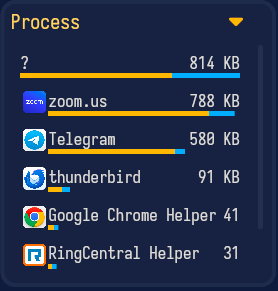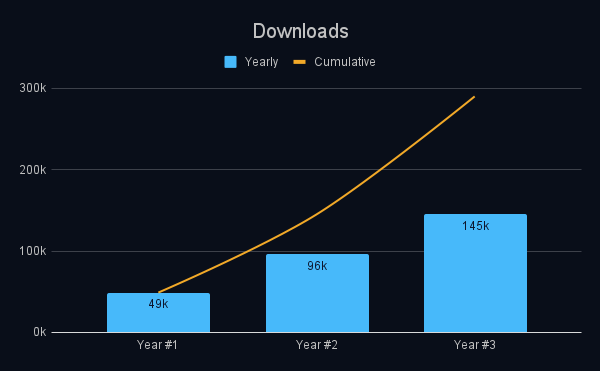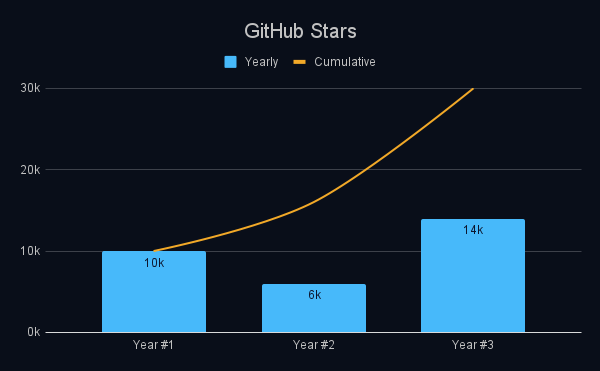Sniffnet is 3 years old today!
This is the perfect moment to glance back at the past year, have a look at what the future holds,
and reflect on the importance of sustainable open source when it comes to a project’s longevity.
Planning
When I launched Sniffnet three years ago, I never imagined it would become such a long-term project.
After the first few months, I felt like the ideas would soon run out and that I’d end up abandoning the ship to focus on something else.
Today, I’m happy to say I was wrong.
As time passes, Sniffnet is increasingly shifting from a toy application to an established software product.
As such, it needs accurate management and planning to keep it on track and ensure its steady progress.
It’s no longer just a matter of coding: it’s also about building solid foundations to ensure the project’s longevity.
This is the reason why the past year didn’t only bring two new releases of the app (v1.3.2 and v1.4.0),
but was also characterised by a bunch of behind-the-scenes efforts to set up this blog, write down extensive documentation,
drop cool merchandise, and come up with a detailed roadmap that you can find below.
As you can see, the plan is to keep Sniffnet alive and kicking for a long time, with new features and improvements being added regularly.
While we are at it, I want to give you a little spoiler: process identification will land in the next major version of Sniffnet!
This is possibly the single most requested feature since the start of the project,
and will allow you to see which application is responsible for each connection, making Sniffnet an even more powerful tool for troubleshooting and monitoring your system’s network activity.
I’ve started working on it and, even though it’s still far from being finished, I already can’t wait to share it with you all!

Community
“I can’t wait to share it with you all”.
This is a phrase I often use when talking about Sniffnet, and it perfectly describes the force that drives me to keep investing my time on it.
I love sharing my work with the community, and receiving feedback from users is an invaluable help in shaping the app’s future.
One of the pillars of software success is its users, and Sniffnet is no exception.
What I feared to be a scarcity of ideas in the long run, is rather turning into a constant flow of inspiration that keeps my will to work on Sniffnet more alive than ever.
Every year I think it won’t be possible to keep the same pace of growth, but so far I’ve always been proven wrong.
In the past 12-month period Sniffnet was downloaded 145k times (as the two previous years combined), and the GitHub repository gained 14k additional stars
(even more than the year the project went viral).


The best part?
This is a vicious cycle: the more the community grows, the more feedback I receive, the more motivated I am to work on Sniffnet, the more it improves, the more users it attracts, and so on.
Funding
“Energy can neither be created nor destroyed”.
This is a fundamental law of physics, and it applies to open source as well.
The energy that we as maintainers have for software development can neither be created nor destroyed.
Such energy is rather transformed into new features, bug fixes, user assistance, project planning.
The problem is that our energy is limited, and the risk of burnout becomes even more tangible when we’re also juggling a full-time job.
As stated in the previous section, the community is a great source of motivation that partially transforms into new energy for us.
However, getting paid for the work we carry out is a much more solid way to make sustainability viable, especially in the long term.
Monetary support from end-users is typically narrow in open source, so part of our efforts is directed towards looking for alternative funding sources.
In the past year, I was lucky enough to be able to work on Sniffnet while also being employed full-time.
This was made possible not only by my intrinsic motivation but also by the financial support received from the European Union’s Next Generation Internet program,
which allocated 21.6 million euros to support hundreds of projects just like Sniffnet.
Having this kind of support should be the norm for widespread and impactful open source projects, and organizations are starting to realise it — see FLOSS/fund and Sovereign Tech Fund for other examples.
It’s still a very long way to go, but recently multiple initiatives of this sort are being launched — I hope Sniffnet and other applications and libraries will be able to benefit from them in the near future.
Wrapping up
Everyone wants to be sure that the applications they use will be maintained over time.
This is especially true for open source software, where the risk of abandonment is always lurking around the corner.
For a project to be long-lasting, it needs to be sustainable, and this requires a combination of factors: a strong community, motivated maintainers, and financial support.

I want to thank you all from the bottom of my heart for being one of the pillars holding Sniffnet up.
You can expect exciting in-app features coming soon, as well as new content on this blog.
Let’s hope for plenty more anniversaries to come!


